Personalised or official
During one of my visits to stamp fairs a stamp trader came to me and asked whether I was interested in envelops with a, to his opinion, "strange" kind of personalised stamp. Because it concerned, oh wonder, stamps with motorcycle images, I bought them directly. For 5 euro I could call the 5 envelops my own.
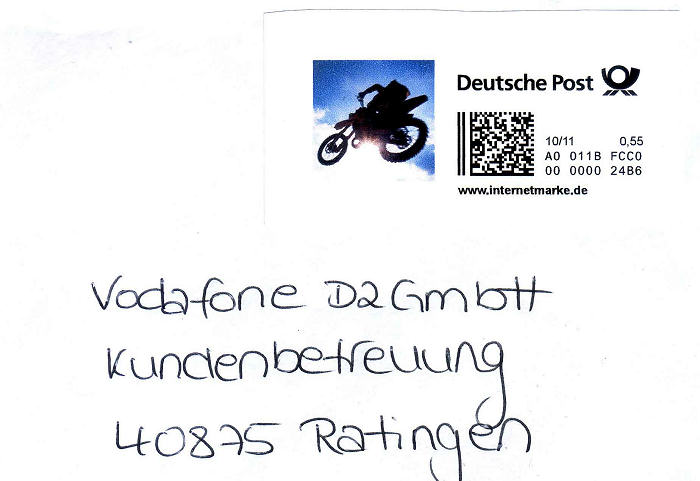
The images on the stamps looked familiar to me and back home I directly looked at the Motor Philatelists website in the Personalised Stamps division. And indeed, there I saw some of my new stamps. But still it did not feel right to me. Are these indeed personalised stamps? I know that the German Post does not offer the possibility to make personalised stamps. And I had heard that it is possible tp print and use stamps via your own computer.
Step 1: design a stamp with use of pre-defind images
There is only 1 way to find out whether these are indeed internet stamps. Once arrived on internet, I went to the website of the Deutsche Post (www.deutschepost.de). There I saw the opportunity to choose for "Internet Marke". Now I became curious.

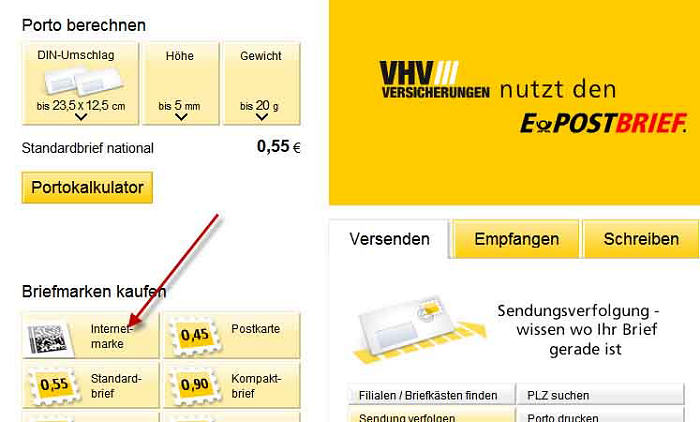
I clicked on the right place, and the next screen appeared. On this screen the user has the possibility to address the envelop ("Adresse hinzufügen") or to choose or change an image.

When you click on "Falls motiv…." a small screen pops up with some examples of images. All images that can be chosen are pre-defined. Because I have visited this website earlier, my choice is stored somewhere and immediately shown. When you click on the downwards arrow you can see all categories which you can choose from. When you have made your choice, by clicking on the desired category, some examples appear on the right side of the screen.
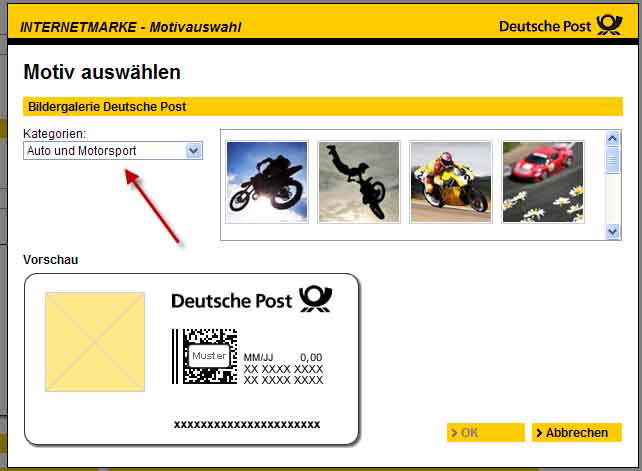
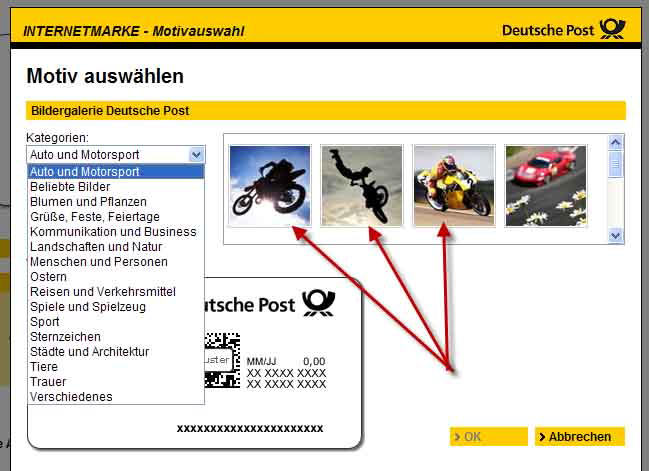
With the light blue bar next to the most right example you can scroll down and view he other examples. By clicking on one of them it is selected, and added to the image of the stamp. Now you can see how your stamp is going to look. In the QR-code it still has the text "Muster" (= example).
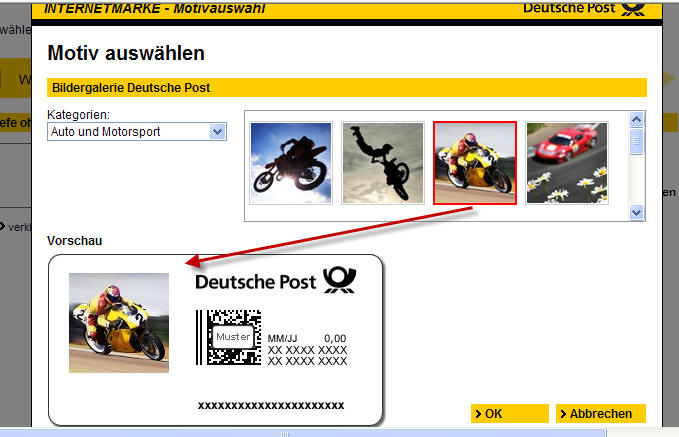
Some other examples:
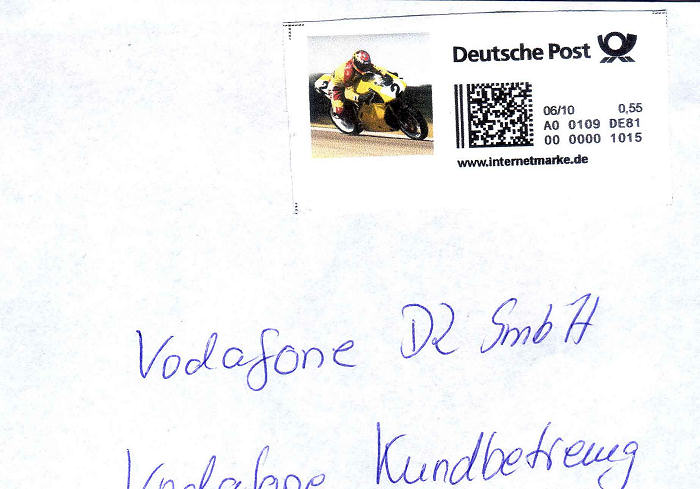
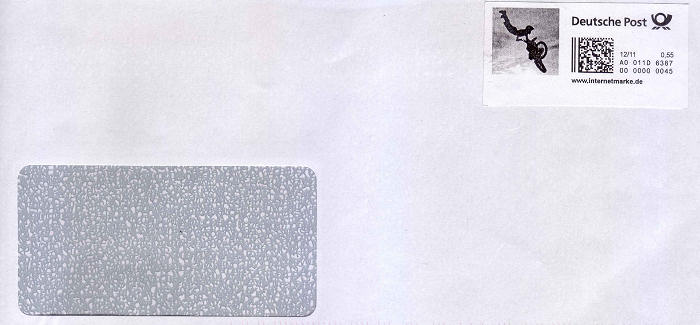
Step 2: payment
The next step is to pay for the stamp. First enter the payment (2) and then execute it (3). The composed stamp is for a standard letter of up to 20 grams: 55 eurocents. This raises the expectation that you have to pay 55 cents. Wrong. It appears that you must have a credit at Deutsche Post. Stamps that you make are payed from your credit until it is consumed. The first time, and every time your credit gets too low, you have to transfer 10 euro.
You have to enter an email address to confirm the transaction. Then you have to choose how you are going to pay: Bank or PayPal. Whenever this all is arranged you can proceed.
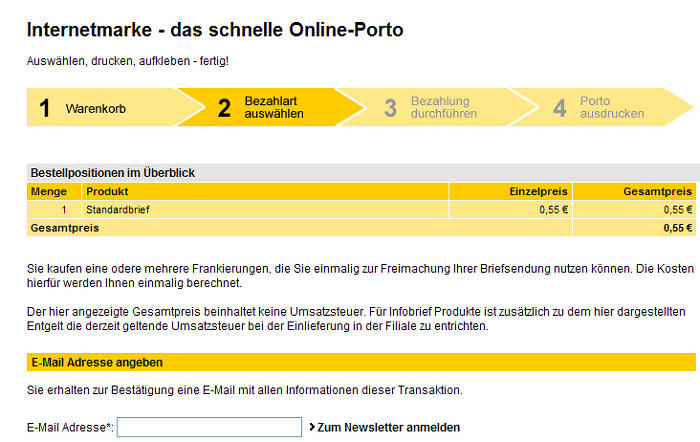
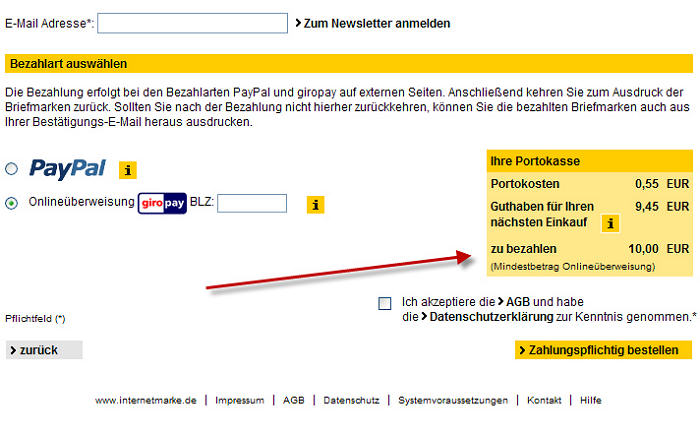
But now it appears that this is only possible when you live in Germany. Logical, because German stamps may not be used outside Germany, but what I missed is a warning in an early stage of the process.
Conclusion: when you are living in Germany and have a computer it is possible to make this kind of stamps and use them. For participants in exhibitions under the rules of the FIP (Federation Internationale Philatelie) this means, to my opinion, that it is allowed to use these stamps in an exhibition collection. This because they are generally available and the total item (image and value) is provided by the German Post.
Not only in Germany this possibilty exists. Also France knows the phenomenon of internet stamps under the name "Lettre verte" (green letter). The process is the same as in Germany, you only have to make more steps in France.

On the French letter above the stamp has been directly printed on the envelop. On the German letters it is clearly visible that the stamps have first been printed on "computer paper" and, after being cut-out, been glued onto the letter.
This kind of "internet stamps" makes a nice addition for thematic collectors, as images from various categories can be used. In contradiction to personalised stamps the exhibitionists amongst us may, when I interpret the FIP rules correctly, use them in their exhibition collection(s).
Nico Helling
Top - Back to former page - Home |










